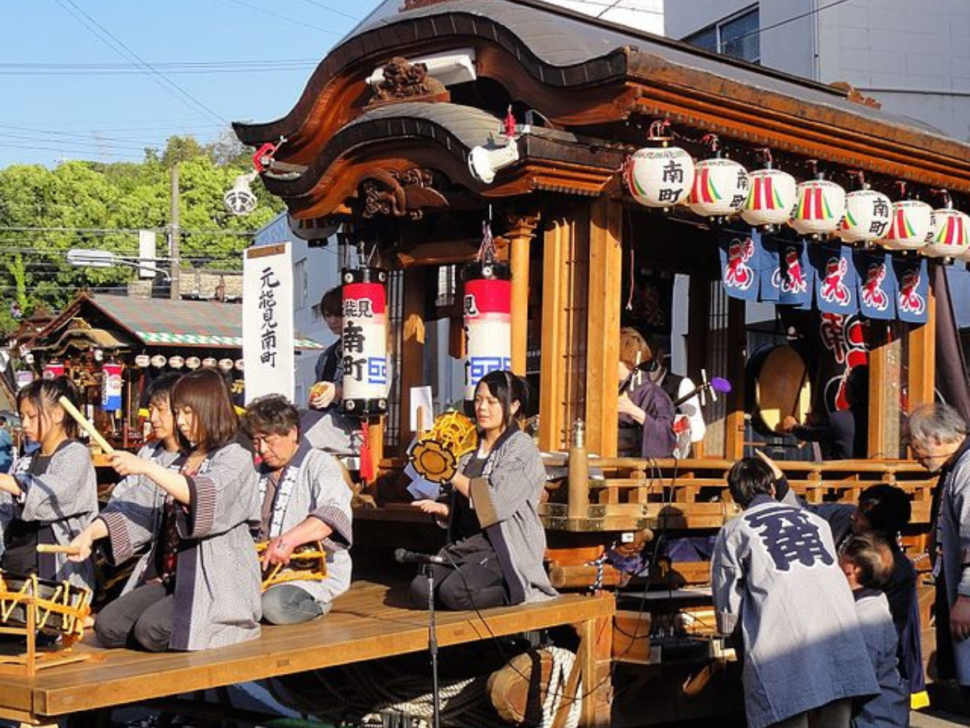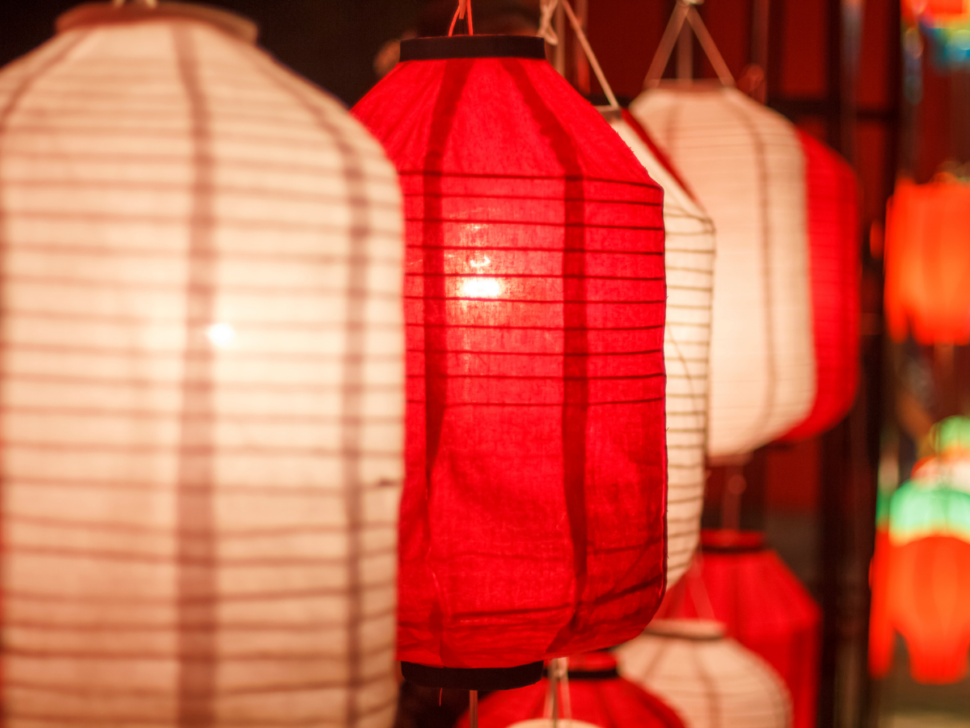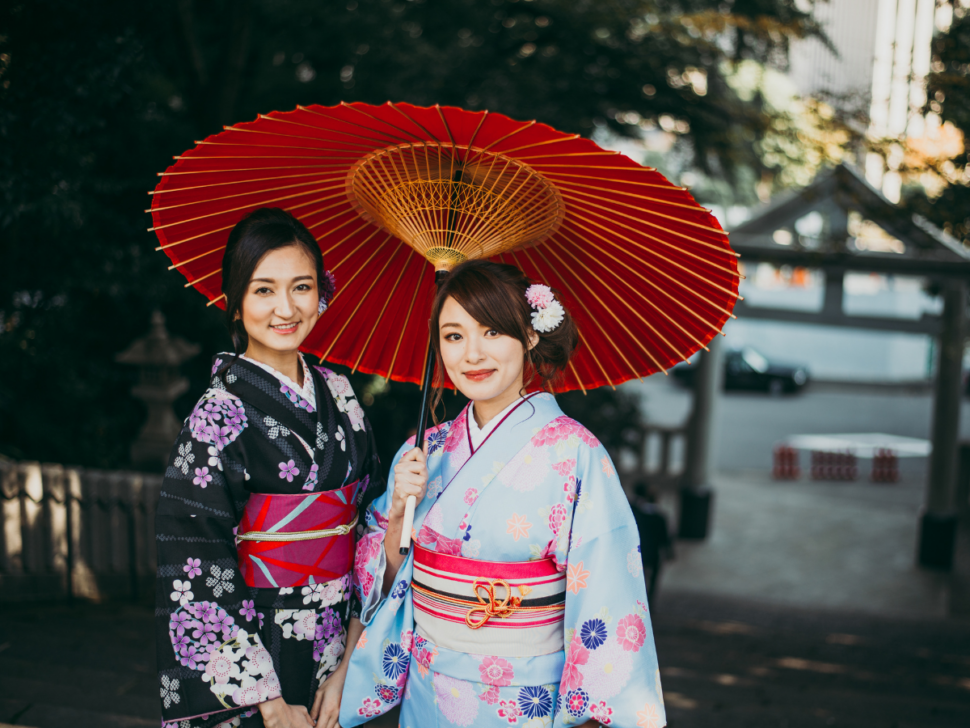25 Japanese Words to Know for Matsuri Season
The majority of Japanese festivals happen during the summer months, so summer is known as festival season in Japan! Some of Japan’s biggest festivals occur during summer, including Obon and Tanabata. Festival in Japanese is matsuri (まつり). Matsuri all celebrate different occasions and holidays, but many share some classic festivities.
One of the things matsuri are most famous for is the food! Festival food is served from yatai (屋台, やたい). Yatai are carts or stands that allow vendors to cook and sell food at the same time. Foods sold at matsuri vary throughout the year, but the most popular include dango, taiyaki, takoyaki, and yakitori.
Most matsuri feature parades of some kind. Dashi (山車, だし) floats are commonly used in parades. These floats are massive, decorated structures that can reach several stories high. They typically have wheels and are pulled along the parade route by several people. Sometimes people sit inside or on top of the floats and provide music and entertainment.
Also featured in parades are mikoshi (神輿, みこし). These are portable shrines carried through the parade route like a palanquin. They often resemble miniature buildings with ornate pillars and roofs. Mikoshi are not to be ridden on like dashi as they are sacred.
Another common parade sight are taiko drummers. Taiko (太鼓, たいこ) are traditional Japanese drums that have been used in Japan as early as the 6th century. Taiko drums are carried through the route by their drummers, who play on the drums as they walk. The drummers wear matching ensembles and work in a synchronized fashion.
Since many matsuri happen during the evening, paper lanterns are used to light them up! These paper lanterns are known as ちょちん. They have been used in Japan for centuries and are made of paper or silk around a bamboo frame. They can also be seen hanging outside businesses, temples, shrines and izakayas. Some dashi are even covered in paper lanterns!
Like any big celebration, matsuri also often include fireworks! Firework in Japanese is 花火 (はなび), which literally translates to “fire flower.”
Live entertainment is also common at matsuri. Shinto-related matsuri may feature kagura (神楽, かぐら), a traditional performance with music, dancing, and costumes. Kabuki (歌舞伎, かぶき) are another form of entertainment found often at Shinto festivals. Kabuki are dance plays put on by performers in elaborate costumes and make-up.
Matsuri began as religious celebrations, and many of them remain so. Because of this, many matsuri happen around shrines and are dedicated to the deity of that shrine. Deity in Japanese is 神 (かみ). Shrine is 神社 (じんじゃ), not to be confused with temple, which is 寺 (てら). Castles, known as 城 (じょう), are also a common place for festivals to be held.
Matsuri are a time for tradition in Japan. Because of this, festivals are one of the times of the year when kimonos (着物, きもの) are worn. Kimonos used to be typical attire in Japan. That changed in the mid-twentieth century, when Western clothing became more available. Now, festivals are sometimes the only time some people wear traditional clothing. During the hot summer months, many trade in their kimono for a lightweight version known as a yukata (浴衣, ゆかた). Wooden platform shoes known as geta (下駄, げた) are worn with kimonos. Special socks known as tabi (足袋, たび) are worn with these shoes, but can be left off when wearing a yukata.
To accompany the traditional dress, some women opt to carry a kinchaku (巾着, きんちゃく). A kinchaku is a traditional drawstring bag made of cloth. They are used to carry personal effects and money around the festival.
Depending on the matsuri, some people may wear traditional masks. These masks may be in the appearance of oni (鬼, おに), demons, or tengu (天狗, てんぐ), goblins. These masks could be worn for fun or as part of a traditional belief that they will scare off demons.
Festivals are also known for having games! Typical carnival-type games are commonly held in festival booths. One of the most famous games is goldfish scooping. Known in Japanese as 金魚すくい (きんぎょすくい), this is a traditional Japanese game that has been played for over a century. The game consists of the player using a ポイ, a handheld paddle made of paper. The player must use the paddle to scoop up as many live goldfish as they can before the water destroys the paddle. The player can then keep whatever fish they have caught as pets and the festival will provide a bag to carry them in. This game is especially popular during summer matsuri.
Super Ball Scooping (スーパーボールすくい) is a variant of goldfish scooping. The rules and techniques are the same, but instead of live goldfish, players scoop up bouncy balls. Like the fish, they can keep all the balls they manage to win.
Yo Yo Tsuri (ヨーヨーつり) is another popular summer matsuri game. The game features a pool or tub filled with small, colorful balloons. These balloons are partially filled with water to give them some weight, and a string or rubber band is tied to the end. The player is given a length of lightweight paper with a hook on the end. The player must hook a balloon and lift it up without the paper breaking.
Ring Toss is known in Japan as 輪投げ (わなげ), and it is also a common festival game, especially during the summer. Thin poles stick out of the ground or table and players toss rings in an attempt to catch them on the poles.
Shateki (射的, しゃてき) is another classic carnival game that has variations around the world. It is a target shooting game where players are given a pop-gun, which uses air to shoot out a cork when the trigger is pulled. Players shoot the cork at the targets in hopes of knocking them down. The harder the target is to knock down, the bigger and better the prize!




